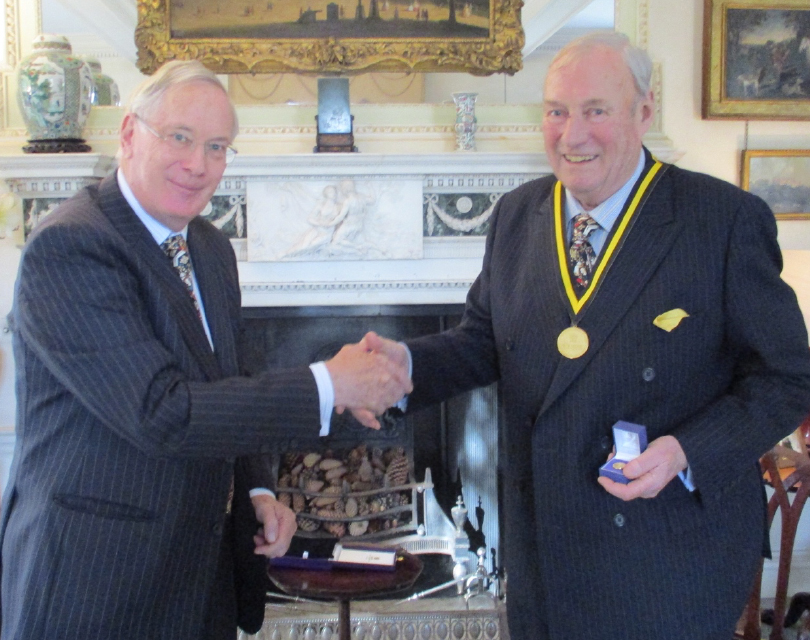Dick Reid, the stone and wood carver who received an honorary doctorate from the University of York and was made an OBE in recognition of his contribution to the art and craft of masonry and sculpture, as well as receiving the Duke of Gloucester Gold Medal for Outstanding Lifetime Achievement, died in York Hospital on 16 January after a short illness. He leaves a wife, two sons and six grandchildren. He was 86.
Apart from his renowned carving work, in the course of his career Dick became involved with a number of institutions and considered it a great honour in 1989 to be invited by the Prince of Wales to take an active part in the Prince's Institute of Architecture.
The Prince was concerned that classical architecture was not being taught anywhere and the idea of the institute was to remedy that by offering summer schools in England and America. They became a great success, with Dick as one of the lecturers as well as a trustee of the Institute. He gave up eight weeks every year for 12 years to lecture at the summer schools.
Always generous with his time and his skills, Dick served on various committees and commissions, local and national, to share his knowledge and enthusiasm. With his wife, Elizabeth, he actively promoted and encouraged the National Association of Decorative & Fine Arts Societies (NADFAS).
He always considered the Duke of Gloucester Gold Medal a highlight because it was presented to him by his peers. He was awarded it jointly by the Worshipful Company of Masons, of which Dick was Liveryman, and Stone Federation Great Britain in 2016. It was presented to him personally by HRH The Duke of Gloucester.
Dick Reid was born in 1934 in Newcastle upon Tyne, where he excelled at arts and crafts at school and was spotted by Ralph Hedley, the realist painter, woodcarver and illustrator best known for his paintings portraying scenes of everyday life in the North East of England. Hedley offered Dick an apprenticeship in his studio as a carver in stone and wood. The training was spread over five years and included attendance at Newcastle Art School.
On completion of his apprenticeship, Dick served in the army as a captain, afterwards enlisting with the Territorial Army for a further 10 years.
Following his service in the Army Dick set up his own stonemasonry workshop in York and established himself as an expert in restoration, conservation and new build schemes, both nationally and internationally. His strength lay in his knowledge born of hands-on experience as a sculptor, stonemason and carver.
Projects he was involved in during a long career included Windsor Castle, The Sanctuary at Highgrove, Fairfax House, York Minster, Carlisle Cathedral, the redundant church of St Sampson’s in York, and Rockland St Peter’s Church, Norfolk.
He repaired and reconstructed fireplaces at Althrop, Spencer House and Chatelherault in Scotland. He restored various notable staircases, recreating 18th and 19th century designs from the originals, and was a lettercutter of distinction – among his work is the Countess of Pembroke’s memorial in Westminster Abbey. There are many other memorials by him to be found as tablets on church walls and headstones in churchyards across the country.

